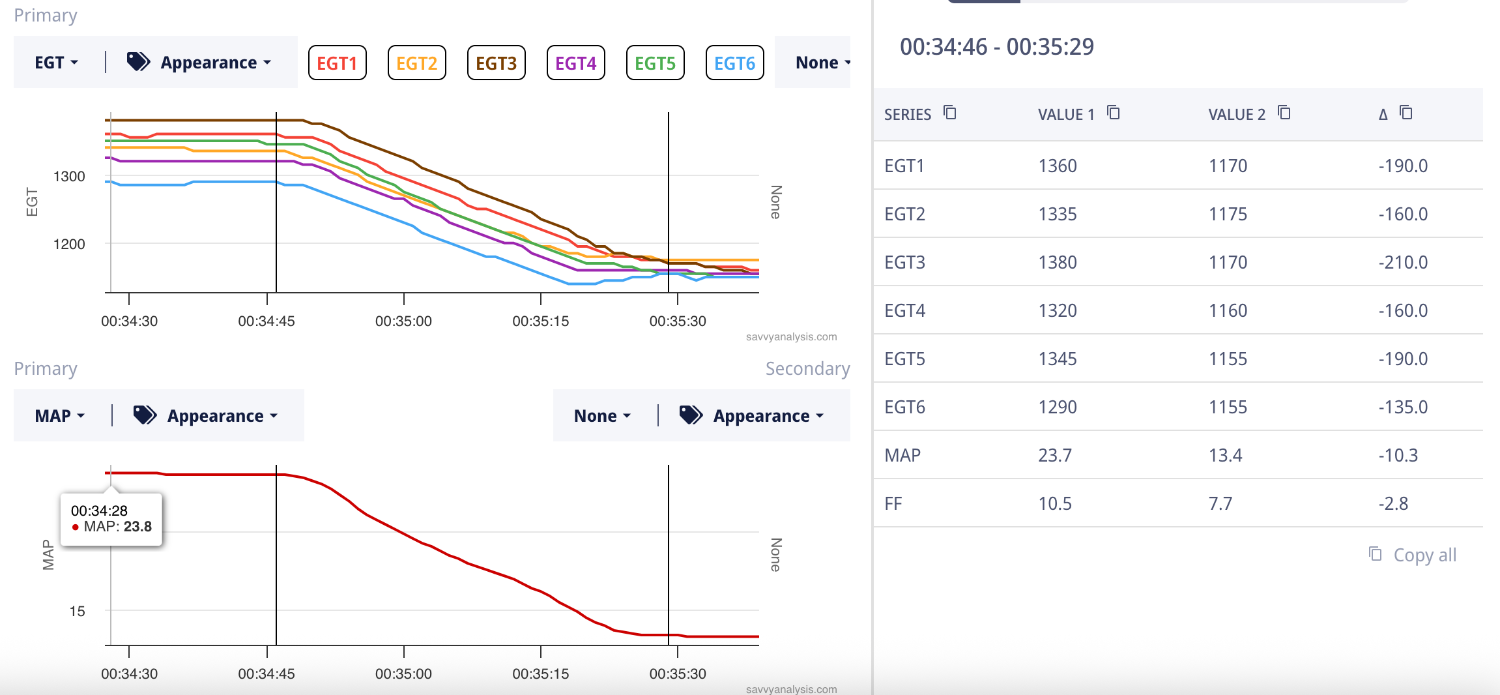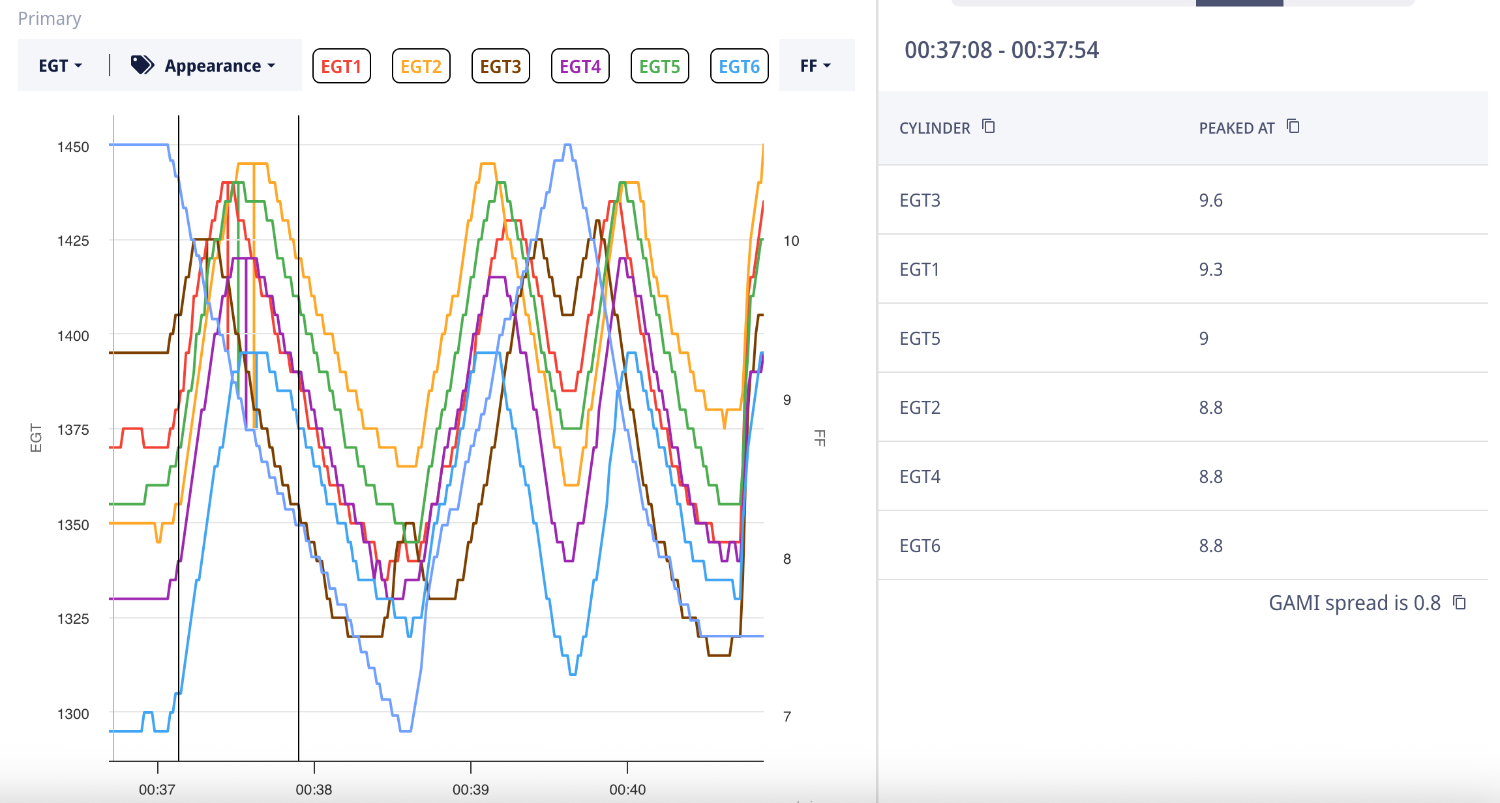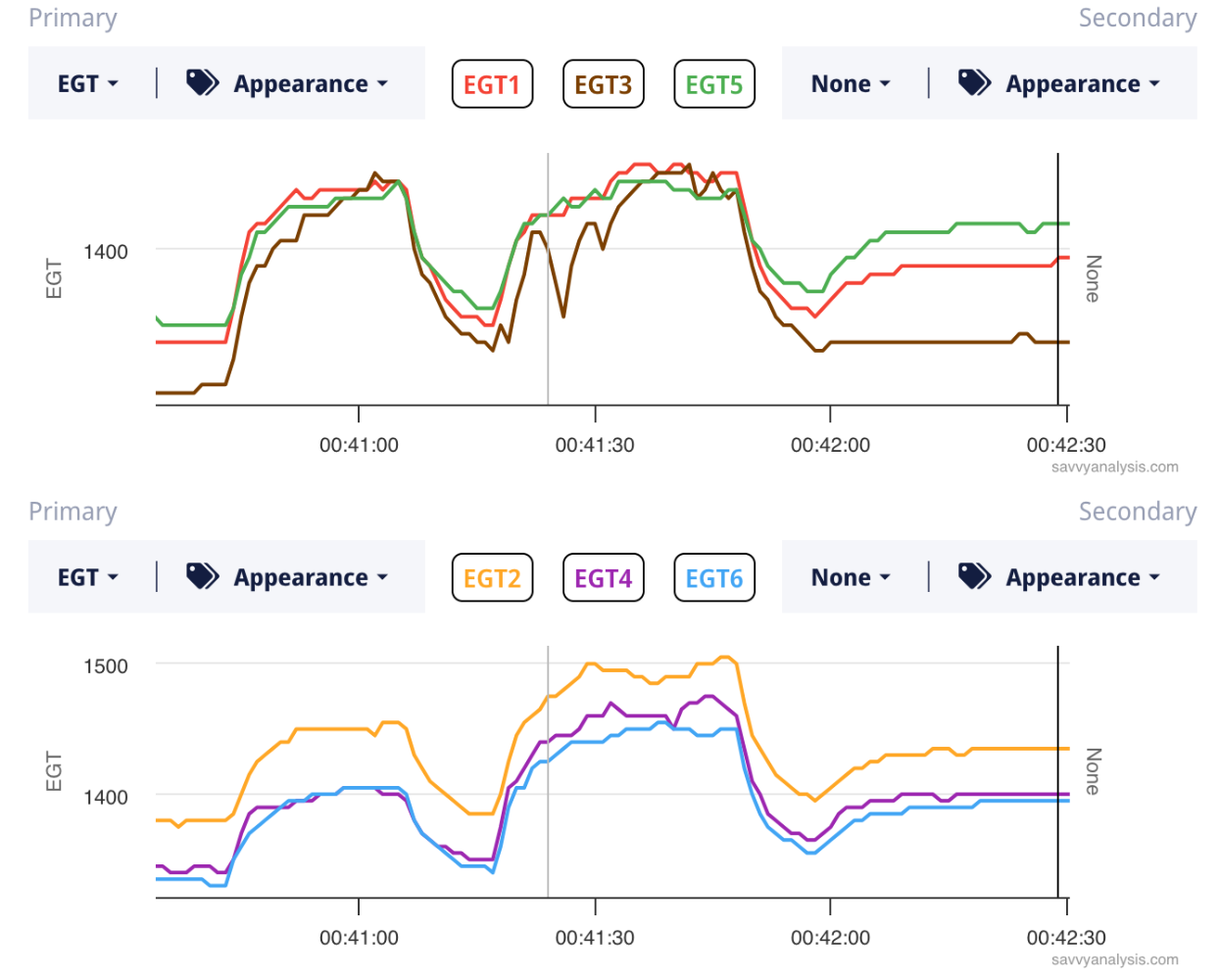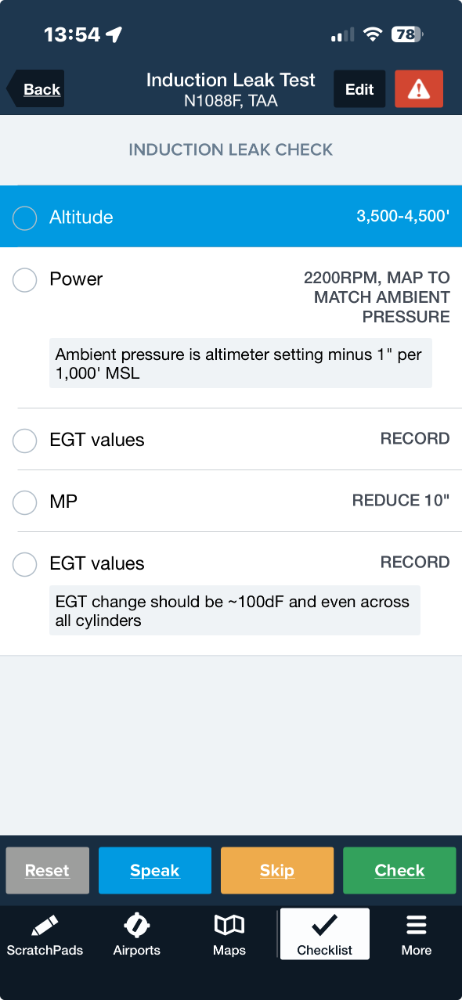-
Posts
1,359 -
Joined
-
Last visited
-
Days Won
7
Content Type
Profiles
Forums
Blogs
Gallery
Downloads
Events
Store
Everything posted by Rick Junkin
-

Cirrus training CAPS use rationale
Rick Junkin replied to Rick Junkin's topic in Miscellaneous Aviation Talk
What year did you attend the Cirrus training course? -

What does an intake leak look like in a turbo?
Rick Junkin replied to Ragsf15e's topic in M20K Owners
Excellent. I'm looking forward to hearing if this resolves your issues. -
I thought this was interesting and enlightening. Some of you may already know this but it was new learning for me. A good friend of mine is an instructor at the Cirrus Training Center in Knoxville. He explained to me why he would almost never attempt an off-field landing in a Cirrus. He said there is a very high probability of nose gear collapse and flip-over on a rough field landing, which would likely trap the occupants inside. According to Jeff: The Cirrus CAPS system is designed to descend the airplane in a slightly nose down attitude. In addition to the honeycomb seat structure that absorbs an amazing number of Gs on ground impact, the nose gear structure is designed to fail in such a way as to also absorb impact energy. Because of this the nose gear is not as robust as one might think. Anecdotally I recalled hearing about quite a number of nose gear collapses on Cirrus aircraft as a result of bounced landings, which now makes more sense to me. Jeff then showed me some pictures of Cirrus airplanes upside down in pastures where an emergency landing had been attempted. Now, I know you're probably thinking the same thing I was, that any airplane could flip over on an emergency landing in a soft or rough pasture. But according to Jeff the odds are way against you in a Cirrus, and the risk of getting trapped in the airplane if it flips is exceedingly high. If an unknown open field were his only option in an emergency he would definitely use the CAPS. So that's why the Cirrus training emphasizes (insists?) that the CAPS is the answer to an engine failure over anything but a suitable/designated landing strip. In optimizing the airplane for the survival of the occupants after a CAPS deployment the nose gear was developed with a shock-absorbing collapse as a design feature. That explained a lot for me.
-

What does an intake leak look like in a turbo?
Rick Junkin replied to Ragsf15e's topic in M20K Owners
I think there is a good chance you'll see the spread narrow back to 0.5gph once you get the other issues sorted. Good luck! And yes, please do share the feedback you get from Savvy. Another opportunity for me to learn something. -

What does an intake leak look like in a turbo?
Rick Junkin replied to Ragsf15e's topic in M20K Owners
Ok, looking at the data here https://apps.savvyaviation.com/flights/shared/flight/10135421/f4cb8108-85d3-4a47-adf0-32b33235bc85 Caveat emptor - I'm not a mechanic, so this analysis is based on my own self-education and limited experience assessing engine data. You will definitely want to run anything I come up with by an expert for validation. That's what I do with my analysis of my own data. Bottom line up front: What I see in the data shows issues with the ignition system and indications of an intake leak on the even side of your engine, most likely at the #6 intake port. EDIT: However, all of these things can affect each other. So it's often best to make one change, reassess performance, and then proceed to the next change if things haven't resolved. The easiest check is the soapy water check for an intake leak, so I'd start there. Here are my observations. 1. Induction check - The even cylinder EGTs dropped less than the odd cylinders, with #6 dropping the least. The even side drops were 160/160/135 for #2/#4/#6, and the odd side were 190/210/190 for #1/#3/#5. Less of a drop indicates a leaner mixture which means more air, hence an intake leak on on the even side. A single leak on one cylinder could be bad enough to affect the whole bank. From the data #6 looks to be the worst, so that's where I'd start with a physical inspection using soapy water and intake pressurization. But I'd look at the whole even side. If you look at the tail end of the data trace for #6 you'll notice a "bounce" in the EGT that isn't present on the other cylinders, further nominating #6 as the source of the problem. 2. GAMI sweeps - These indicate your cylinders are not well balanced for LOP ops. There are 3 available data sets here. The first, moving from rich to lean, yields a spread of 0.8gph; the second, moving from lean to rich, is 1.1gph; and the third, moving from rich to lean, is 1.2gph. Here's the sampling of the best case, but you can see the other two sets of peaks as well. There's some work to be done here, but not before you take a look at your ignition. Which leads us to... 3. LOP Mag check - The first mag you checked looks to be a little weak, especially on the even side of the engine. #4 and #6 in particular. And then #3 on the second mag is a bit erratic, which may be a weak plug or wire, and #4 & #6 are again weaker than #2. You'll want to get this figured out first and then look at your GAMI spread again. EDIT: Disregard the comparison of #4 & #6 to #2. Minor differences between EGTs are expected and dependent more on probe placement and other flow factors that vary between cylinders. Comparing EGT behavior across multiple cylinders at different conditions is valid. Comparing absolute EGT values in most cases is not. My bad. Once again, I'm not a mechanic and this is an analysis of your data based on my own learning and limited experience. Get an expert's assessment before spending any money. -

What does an intake leak look like in a turbo?
Rick Junkin replied to Ragsf15e's topic in M20K Owners
Perfect, I'll take a look and get back to you in a bit. Hopefully other folks will be looking as well -

What does an intake leak look like in a turbo?
Rick Junkin replied to Ragsf15e's topic in M20K Owners
@Ragsf15e You'll need to share the link from the Savvy page, not the copied link address you have in your browser. You'll find it on the right side of the Savvy page when you have the flight data displayed. The link will look like this https://apps.savvyaviation.com/flights/shared/flight/8944398/75270480-f077-4e40-9c9d-5b70f51d9a31 -

Default latitude and longitude format in the G1000
Rick Junkin replied to dkkim73's topic in Acclaim Owners
How do you make the change? What’s the menu/selection flow? -

Default latitude and longitude format in the G1000
Rick Junkin replied to dkkim73's topic in Acclaim Owners
Your best bet, if you’re planning to do this yourself, may be to enter config mode and look for a coordinate format setting option. But I’m guessing you’re trying to avoid entering that mode unless you know it will get you the result you want, which is a prudent move. There is sure to be a Garmin guru along shortly who can offer more info. Have you talked to an avionics shop with a Garmin dealership? Configuration changes are typically frowned upon by Garmin unless one of their dealers make the change. @Garmin Aviation Team -

Lasar Aviation Mooney Assurance Program - Really?
Rick Junkin replied to PeteMc's topic in General Mooney Talk
The whole pitch feels premature to me. My impression after reading through what LASAR has released is that they are still at the "back of a napkin" stage in this project but decided to put it out where people can see it to garner interest. Unfortunately they haven't presented anything detailed enough that we would regard as tangible value in which to be interested. There have been a number of threads here about pooling resources to do group orders of high demand parts in quantity but I can't recall that I've seen any of them be successful. I'm happy to stand corrected if folks have done it. LASAR apparently did it with the no-back springs on their own dime (as far as I know). If that is what this scheme is really all about, generating the up-front cash for more cost effective parts production, it would be nice if they were able to just state it clearly that way. Still, I would want to see a stronger value proposition than solely parts availability to warrant the annual subscription fee. Does LASAR have a presence here on MS? EDIT: I answered my own question (duh) @LASAR -

Hangars at Pineville LA 2L0 $75/month??!!!
Rick Junkin replied to Rick Junkin's topic in Miscellaneous Aviation Talk
I’ve been the steward of airplanes in North Carolina, California, Missouri and now Tennessee. NC and CA were tiedowns for practically free back in the late 80’s. In MO I leased hangars ranging from $130/month for a ratty bare bones bare bulb gravel floor manual door t-hangar to $280 for a nice newer t-hangar with good lighting and electric door that included utilities. The land lease for my current hangar in TN is ~$165/month. The hangar itself and utilities are my responsibility. I’m happy to have use of it. Yes, you’re correct, location makes a difference and I’ve always been a stone’s throw from a recreation destination or a “major metropolitan area”, if that applies to Knoxville . I was surprised by how out of touch I am with rural airport economics and how relatively affordable they are. Had I broadened my search, my retirement location selection may have been swayed. I guess it’s never too late for a change. -

Hangars at Pineville LA 2L0 $75/month??!!!
Rick Junkin posted a topic in Miscellaneous Aviation Talk
This article was in today's AOPA SmartBrief email. I must be missing something here, but they're talking about lowering the monthly hangar lease rate from $150/mo to $75/mo, UTILITIES INCLUDED. And the tenants are saying that's in line with other local airports. Have I just been living in the wrong places? https://www.kalb.com/2025/10/14/pineville-city-council-discuss-new-airport-hangar-rates-pafford-expansion/ -

What does an intake leak look like in a turbo?
Rick Junkin replied to Ragsf15e's topic in M20K Owners
The Foreflight checklist function. -

What does an intake leak look like in a turbo?
Rick Junkin replied to Ragsf15e's topic in M20K Owners
With an induction leak on a turbo, the leaking cylinder will run richer than the other cylinders in cruise at altitude. You identified lower EGT and higher CHT running LOP, which I’d correlate with #6 possibly running ROP, potentially due to an intake leak. EDIT: What you’re seeing on the ground at 1000RPM also correlates with a #6 induction leak, where #6 would now be running leaner than the the other cylinders. A GAMI sweep could show you what’s happening, but there is a comparative check you can do specifically driven by setting two discrete manifold pressures and comparing the EGT changes across the cylinders. They should all be about the same. The complete details for performing this check are on the Savvy site. ANOTHER EDIT: I couldn’t find the check on the Savvy site, so here’s what I use. As for looking at general engine data and trying to identify it, that’s more difficult without comparing a recent flight to an historical flight before you noticed a change. It can be done but you have to look for very minute EGT deviations in the data when moving from one power setting to another. You can also check for intake leaks on the ground with a spray bottle of soapy water and a buddy to move the prop for you. -
I have an automobile trash container that hangs from the back of the right seat that I use to hold things I might need in flight. That’s where my X3 and boom cannula wind up when I’m traveling alone. My wife’s will fit in there too. i’ll find a pic or link. EDIT: Here’s the one I have https://a.co/d/6jS7TUQ
-
Ditto, sort of. I have two of those. Each one contains a complete Precise Flight setup for each of the back seats to plug in to the ship O2. I have one of these https://preciseflight.com/product/premium-hard-shell-case-x3-demand-conserver/ that contains two X3 demand conserver setups for the front seats. They all fit into a small zipped duffel that resides on the hat shelf. Truth be told, my X3 setup is always in place and hooked up. And no, I've never had 4 adult people on O2 at altitude at the same time. I got all of that gear in my "new owner exuberance" with visions of many high altitude cross countries with friends in the back. Ain't gonna happen.
-

Basic Med popularity on MooneySpace
Rick Junkin replied to Bolter's topic in Miscellaneous Aviation Talk
This is the next piece of regulatory nonsense I'd like to see the alphabet organizations attack. I'm sure there are more than a few of us flying on basic med that wouldn't pass a third class medical without a special issuance or a stack of recurring test results, and some who couldn't pass a third class period. Those same people, if they were approaching aviation for the first time, could fly as a sport pilot with a "driver's license medical", but would be prohibited from doing so now because they failed the test for a higher standard of certification. And the thing is, for the uninitiated new student pilots, unfamiliar with the specifics of the FAA medical application/examination nuances, they have no idea they may be setting themselves up for lifetime disqualification from any type of flying just by filling out a medexpress application and going to an AME for an exam. It doesn't make sense to me. I admit I haven't researched the fact finding and decision rationale for why the regulation was written this way. It creates a situation where two different people could train for and be issued a sport pilot certificate that they can exercise with just a driver's license medical. Then when one of them decides to pursue a private pilot license and goes for his FAA class 3 physical, he's denied the class 3 and can never fly again. This almost happened to one of my students. He was about ready to solo and wanted to get going on his medical. Had we not taken the time to discuss the requirements and show stoppers before he started filling out his medical application he would have been denied for previous use of ADHD medication and forced into a lengthy and expensive evaluation process that may or may not have resulted in his getting a class 3. Instead we shifted our focus to sport pilot, which he ultimately put on hold. But he still has the option to go that route in the future. That option could have evaporated had he been denied his medical. My personal take-away was to have the conversation about medical show stoppers in the initial interview before we start training. That's a no brainer in hindsight, but he was my first experience with someone with a disqualifying medical history. Lesson learned. -

Basic Med popularity on MooneySpace
Rick Junkin replied to Bolter's topic in Miscellaneous Aviation Talk
Yes, this is true and I do. -

Aircraft for sale denied medical
Rick Junkin replied to Little Dipper's topic in General Mooney Talk
Thread creep - This discussion makes me wonder how many folks are out there flying without a valid medical, or even a valid certificate. I know of one who was (he's no longer flying) so I have to assume there are more. There was a fatal accident case a couple of years ago where a guy never finished his training for a private certificate, never got a medical, but bought an airplane in which he ultimately killed himself and his girl friend. But that's not the kind of person I'm thinking of. My question is more about people who are competent pilots that get caught up in the bureaucratic process and decide it's worth the risk to "do their own thing" regardless of what the system says. You know, anarchy. I'm not advocating for it, but I wonder how many folks have made that conscious decision. I'm guessing there are more than we might think. I can see where a person would make that call. Anybody know where that kind of data might be available? It's probably hard to find outside of people who have lost their bet with the universe and got caught in an enforcement action. -

Basic Med popularity on MooneySpace
Rick Junkin replied to Bolter's topic in Miscellaneous Aviation Talk
My first cancer diagnosis prompted me to switch. I had a valid Class 2 with a special issuance for obstructive sleep apnea at the time so I immediately transitioned to BasicMed. This move preserved my ability to keep flying when my doc and I judged I met the requirements of paragraph 61.53, and never having to worry about a future Class 2 or 3 being denied or submitting to the ass pain associated with the recurring reporting and pile of documentation OKC requires. It was quite an easy decision and transition. I briefed my primary doc using the materials AOPA provides, answered a few questions she had and she was immediately on board. After surgery and adjuvant cancer treatment, a later bout with a different cancer that required surgery, and a total hip replacement, my doc and I are still making excellent informed decisions on when I am and am not good to fly without needing the okeedokee from a remote government official who has never seen me. I can't fly for hire anymore, but I'm fortunate to be retired and not in financial need. BTW, the score is Junkman - 2, Cancer - 0. I'm hoping that remains as a final score. -
I'm no autopilot expert, but I did operate a KAP 150 for a number of years. As I recall the pitch behavior on mine seemed a little wonky (technical term) if I played around with it on the ground as you've described but it worked fine in the air. For my preflight checks I pulled the yoke back about half way, approximately to the cruise position, and engaged to A/P to confirm it would initially hold it there. I'd then hit the trim switches on the yoke to disengage, re-select A/P and HDG and twizzle (another tech term) the HDG bug back and forth to confirm the yoke moved appropriately, and use the big red button to disengage. Other than running the trim both directions manually and with the yoke switches, that was the only ground check for pitch that I did. With the airplane sitting on the gear in it's classic Mooney nose-high attitude the A/P is going to command pitch changes it thinks are needed to maintain level "flight", and that's what I attributed the A/P pitch inputs on the ground to. Using the rocker switch on the KC-191 with only A/P selected is telling the A/P to change the pitch up or down, so since the airplane isn't moving in pitch I think (?) the computer will continue to command a pitch change in the direction you told it to go until it hits the stop. Is that what you're seeing? Bad on me, I didn't check the left/right trim switches independently, or exercise the panel rocker switch as part of my checks. I trusted the computer self-test caught everything I didn't physically manipulate. Hopefully one of our King A/P gurus will be by shortly to provide you with a more complete answer and assessment of what you've reported. The delays and trim wheel behavior you describe don't sound familiar.
-

NEW NEWS FROM LASAR AND MOONEY AS OF 10/2/2025
Rick Junkin replied to cliffy's topic in General Mooney Talk
Once you take the time to research the process, and the FAA requirements and involvement, it will make more sense to you. What "should/could be" and what "is" are two completely different things. Change/streamlining of the FAA process will not happen quickly or through actions or abilities of the users of the system. Until the FAA formally changes the PMA requirements and approval process, no amount of technical savvy on the part of an applicant will make any difference in the time or expense required to accomplish the process. -

NEW NEWS FROM LASAR AND MOONEY AS OF 10/2/2025
Rick Junkin replied to cliffy's topic in General Mooney Talk
If you do an internet search on "what does it take to receive FAA PMA authority" you'll find the information and reference data that will help answer your questions. In addition to cumbersome and slow, the process is expensive, especially for a shop that doesn't already have a documented formal quality assurance program. And that assumes the shop can obtain the production engineering data from the original manufacturer, or have the capability to reverse engineer the data to the FAA's satisfaction. Then there is the cost/benefit analysis that accompanies any business decision. Economy of scale is difficult or impossible to realize in our niche market, so a business needs to recoup all of the administrative, testing, tooling and setup costs in the price they charge for the limited quantity of end product. This price needs to allow the manufacturer to be profitable while remaining affordable for the end customer. We've just seen this with new production of no-back springs for the gear actuators. Affordability is in the eye of the consumer. And altruism isn't a trait commonly found in significant measure in a successful business, so if in the C&B analysis the part(s) can't be produced at a cost that allows for an affordable price, it doesn't get produced. -
@Jetpilot86 Kudos for the empirical data compilation, thanks for sharing.
-

Retract Gear or Flaps First in a Go Around ?
Rick Junkin replied to donkaye, MCFI's topic in Modern Mooney Discussion
My use of the word "technique" was a little strong . There really isn't anything to it - I set my landing configuration as I approach the FAF, gear down and flaps extended to the T/O position, and then don't change the flaps through either landing or executing a missed approach. Some refer to this flaps setting as "approach flaps". Runway length and conditions permitting, I leave the flaps at that setting and target the appropriate speeds for this configuration through landing. Nothing cosmic. If I go missed or abort the landing I don't have to do anything with the flaps until I'm well up and away, with less pitch impact when I use full power. It works comfortably for the destinations I typically fly to with longer runways. I'll extend full flaps when runway length or condition warrant. If you find this interesting I suggest throwing one or two of these in the next time you're out practicing no-flap landings. Check the book to get the proper speeds for the configuration and see how it looks to you. I'm not offering this as the "right" way or the "best" way, rather its "A" way to execute the approach and landing phases that I've found make my life easier. And back to the original premise of this thread, I raise the gear first.







